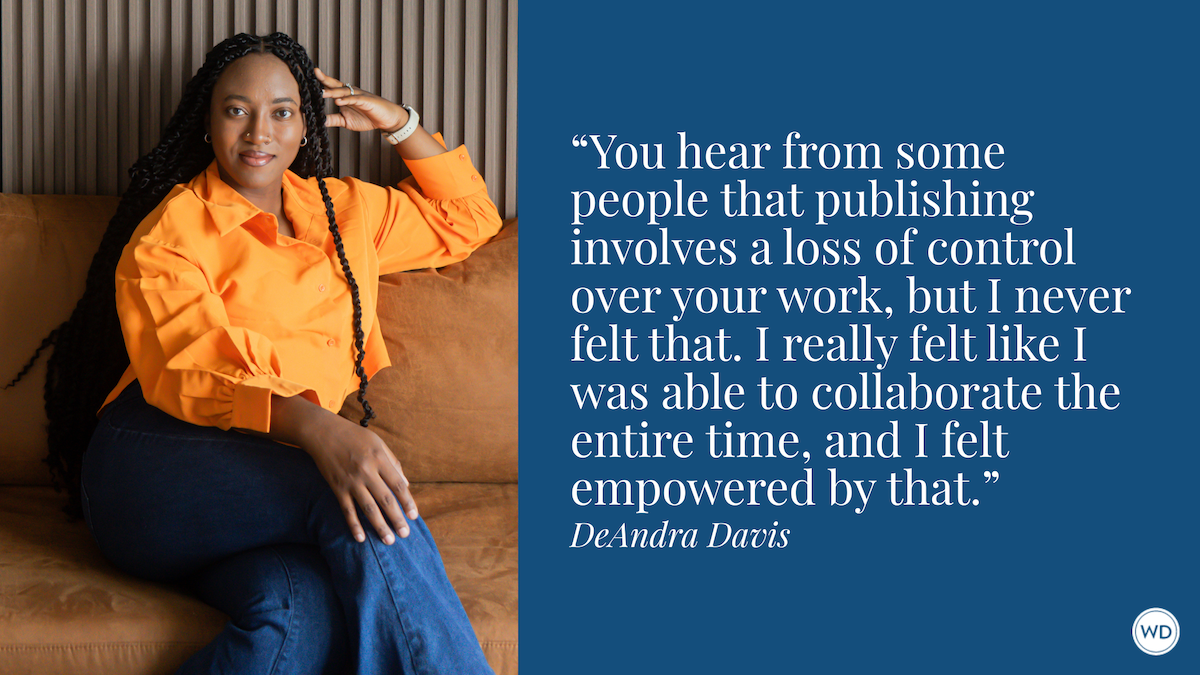7 Top Tips to Create a Cinematic Novel
Writing a story that has all the enticing elements of a screenplay in novel form can be a challenge, but if done right it can lead to a cinematic manuscript that’s bound to catch the eye of agents and readers. Here are seven ways to take your eye for big screen story ideas and craft them into can’t-miss novel ideas.
Order a copy of Irena Brignull's The Hawkweed Legacy.
Bookshop | Amazon
[WD uses affiliate links.]
HAVE A STRONG PREMISE
Imagine having to pitch your novel idea to some studio execs. Can you do it without losing your way and without losing their attention? Is it instantly gettable or does it need explanation? Of course, there’ll need to be depth to the story but that doesn’t mean the overarching idea can’t be simple. Mine was about two teens switched at birth, one a normal girl, the other with strange, magical powers. There’s so much more to it than that but I found that this captured people’s imaginations and made them want to know the rest.
THINK VISUALLY
Sounds obvious, I know, but it’s easy in a novel to get lost in exposition and the inner thoughts and feelings of your characters. Screenplays have a vast cast and crew to bring them to life. There’ll be direction, lighting, design, performance, a soundtrack, to name a few. With novels, I’m very aware that I just have my words to spark the reader’s imagination. So I try and be the camera, considering both the wide shot and the close up. I like to picture my settings on a big, wide screen, offering a panoramic view. In my novels, this included a vast forest, rolling hills, the lights of a town at night, a bird’s eye view of the world, a battle on a snow-covered cliff top. More important, though, is the detail. It’s often something sensory – a noise, a smell, a taste, a glimpse of something tiny that might usually be overlooked. I think this makes a moment feel truthful, and if it’s truthful it’s personal, and if it’s personal it has the power to draw the reader in and move them.
STRUCTURE
Structure is all-important in a screenplay. With novels, this pattern of moments can meander more. If you want a cinematic feel, however, I’d recommend spending more time planning your plot. Think about scene order and chapter order. Think about when to come into a moment and when to come out. If you have backstory, consider the best place to introduce this. Only include ideas at the start that will be paid off at the end. Focus on those initial questions – who, why, when, where. What’s the moment that ignites the chain reaction that is your story? Include turning points. Create twists and surprises. Keep up the pace but don’t rush. Build to a climatic finish. Sounds so easy, doesn’t it? If only! I’m loathe to offer up more film speak of inciting incidents and three act structures and character arcs because I’m wary of formulas. So take this advice if you will, but don’t be a slave to it.
DRAMATIC TENSION
I’ve adapted many books for the screen and my focus is always on building up dramatic tension. Some novels are not dramatic by nature so I have to re-work the relationships in order to create conflict. The tension often centers around a character’s hopes and dreams and the obstacles that lie in their way. I also like to see everything that a character says or does, or doesn’t say or doesn’t do, as a choice, even if it’s a subconscious one. This immediately heightens the sense of drama. As does the gap between what a character and other characters know, and that between a character and the reader. Use these gaps to create a feeling of friction. And remember that old adage, show not tell. Telling stifles dramatic tension.
ACTION AND DIALOGUE
Screenplays are essentially made up of these two elements so try and include both in your cinematic novel. When I finally got around to writing my first novel, I relished the chance to write descriptive prose. But my training in screenwriting kept me in check when I started to over-write. For me, stories are about action and consequence. I put a character in a certain situation and allow his reactions to trigger a set of consequences that have dramatic effects. When writing a screenplay, you don’t have the luxury of exploring a character’s inner thoughts and feelings. You have to use the action and dialogue to reveal motivations. It’s worth looking at your novel in this light and seeing how you’ve chosen to reveal character. With dialogue, less is often more. I spend so much time editing this down in screenplays, really honing the lines so they work on several levels – character, plot, theme. And, as I mentioned before, people often don’t say exactly what they are feeling, so think about what they might be evading.
SET PIECES
Does your cinematic movie contain big, exciting, memorable moments? A fight, an escape, a chase, a scene of triumph or failure, of laugh out comedy, tear-jerking loss, or heart-warming romance? Movies often contain a string of these. They are the moments that stay with you after the movie has finished. In a musical, they’d be the song and dance numbers. I try and make sure I’ve got the equivalent of those in my stories. The bigger they get, the harder they are to choreograph. I included a full on battle scene towards the end of my book and, believe me, it was a pain to write. But it gave the moment a sense of scale and drama that made it worth it.
CHARACTERS AND THEIR JOURNEYS
I’ve left one of my most important tips for last. At least, it’s my favorite bit of the process. All stories are about character, but in movies, the journeys they go on, literally and psychologically, are usually clearly defined. Characters tend to have a goal, even if it’s an emotional one, that an audience can get behind. And their attempts to achieve this goal changes them. So think about who your central characters are at the start of your story, and who they have become by the end. You can have a fabulous premise, great set pieces and a tight structure but without fully developed characters, it will all feel hollow.
Irena Brignull is a screenwriter, novelist and mum. Her screenwriting credits include the Oscar nominated movie, The Boxtrolls, starring Ben Kingsley, Elle Fanning and Simon Pegg. (She was nominated for Best Screenplay for that one at the Annie Awards in 2014.) Her adaptation of The Little Prince, directed by Mark Osborne and starring Jeff Bridges, Rachel McAdams, James Franco and Marion Cotillard, closed the 2015 Cannes Film Festival. She also adapted Skellig for Sky which starred Tim Roth, John Simm and Kelly MacDonald. Before all this, Brignull was a Script Executive at the BBC and then Head of Development at Dogstar Films where she was the script editor on Shakespeare in Love, Captain Corelli’s Mandolin, I Capture the Castle and Bravo Two Zero to name a few. She lives with her family in London but was brought up outside the city in the beautiful Chiltern Hills.








